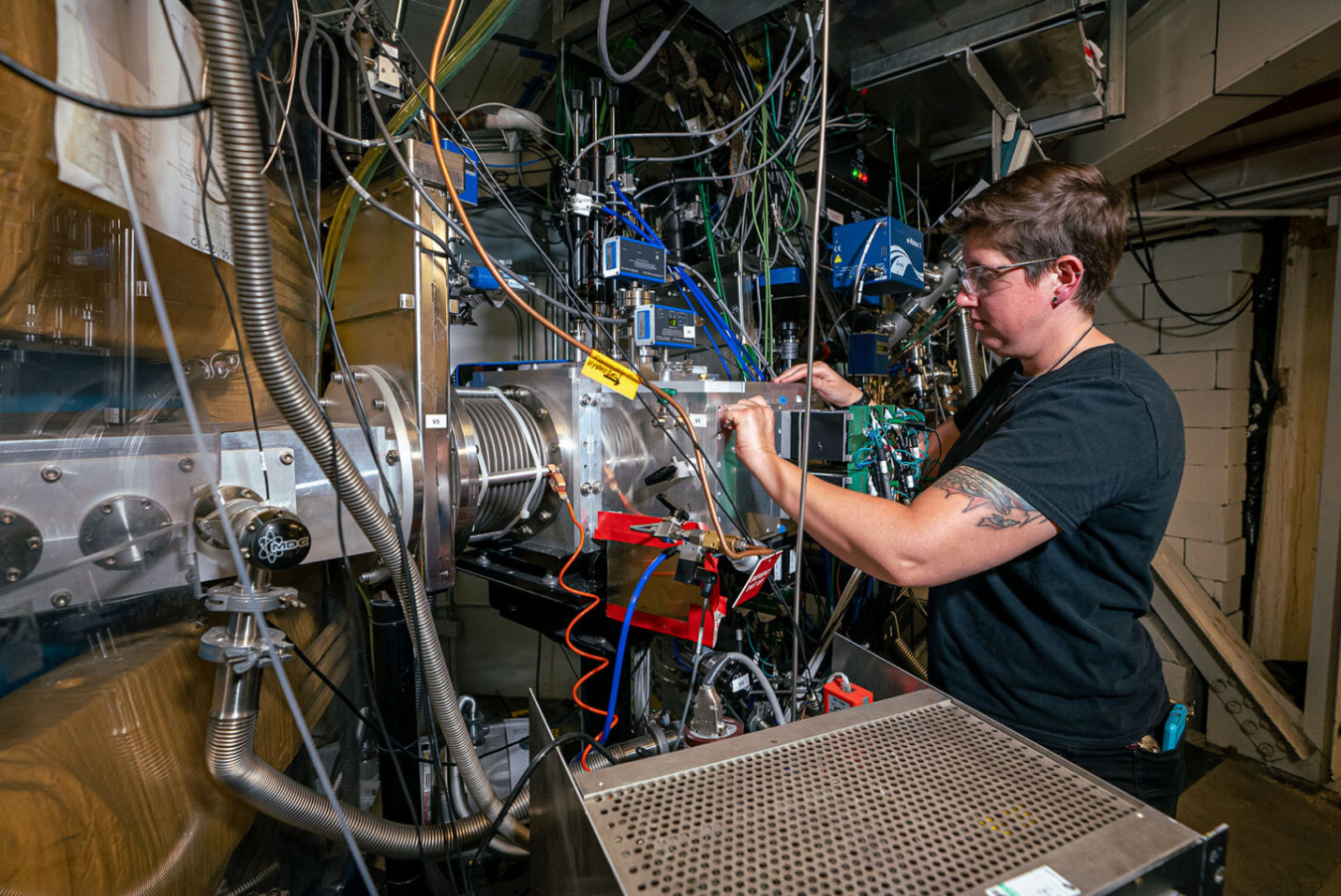Superheavy elements are elements that have 104 or more protons in each atom. (They have atomic numbers of 104 and above and are also known as the transactinide elements.) These elements have several characteristics that make them different from other elements on the Periodic Table.
Unlike most elements, superheavy elements have only been observed after scientists have created them in a laboratory. Researchers – including some at Department of Energy National Laboratories – create superheavy elements by smashing a beam of ions of one type of element into a target of another element. When the ions collide, some of them fuse together and form a new element.
Superheavy elements are very unstable. They are highly radioactive, which means they emit energetic particles and decay into new elements. Some of the superheavy elements last such a short period of time that scientists can only know that they produced the element because of the patterns it shows as it decays.
Researchers are interested in creating superheavy elements because of the possibility of reaching the “island of stability.” The island of stability is an area on the Periodic Table of Elements where new superheavy elements would be more stable than current ones. These new elements would still be radioactive, but last for longer periods of time than current superheavy ones. These elements could also have unique chemical properties and open up new areas for research. Studying existing superheavy elements helps scientists identify their unique characteristics and understand if the elements are in the right place on the Periodic Table.
DOE’s Role in Superheavy Element Research
DOE’s Office of Science has played a long-standing role in discovering and creating elements.
Researchers at DOE’s Lawrence Berkeley National Laboratory found the first superheavy element – element 104, rutherfordium – in 1969. From the 1990s to today, scientists at DOE’s Lawrence Livermore National Laboratory were part of a team that discovered elements 113, 114, 115, 116, 118, and most recently, 117. The creation of several of these elements relied on materials produced at DOE’s Oak Ridge National Laboratory.
DOE continues supporting research to create superheavy elements as well as study their nuclear and chemical properties. Scientists at the Facility for Rare Isotope Beams, a DOE Office of Science User Facility at Michigan State University, investigate the theoretical underpinnings of superheavy element chemistry. Scientists at DOE’s Lawrence Livermore National Laboratory are developing new tools to carry out chemistry studies of the superheavy elements. A team led by DOE’s Berkeley Lab is investigating new methods to create superheavy elements and to study their chemical properties. The team developed a new technique to create element 116 as well as another one to make molecules with heavy and superheavy elements. They are hoping to use these techniques to discover element 120.
Fast Facts
- Researchers at the DOE’s National Laboratories have contributed to identifying more than 20 of the elements on the Periodic Table.
- Element 117 is the most recently discovered superheavy element. It was named tennessine to acknowledge the state’s contributions to its discovery, including ORNL’s role. ORNL researchers used the High Flux Isotope Reactor (a DOE Office of Science User Facility) to produce the radioisotope berkelium-249 needed to create tennessine.
- A sample of tennessine has a very short half-life. Depending on the isotope of tennessine, it decays to half of its mass in either 14 or 80 milliseconds.
- When scientists can observe element 120, these observations will help them map the characteristics of the island of stability.
Resources
- DOE Office of Science Nuclear Physics program
- Facility for Rare Isotope Beams
- Research Highlight: New Progress Toward the Discovery of New Elements
- Video: Tennessine: Discovering a New Element
DOE Explains offers straightforward explanations of key words and concepts in fundamental science. It also describes how these concepts apply to the work that the Department of Energy’s Office of Science conducts as it helps the United States excel in research across the scientific spectrum.


